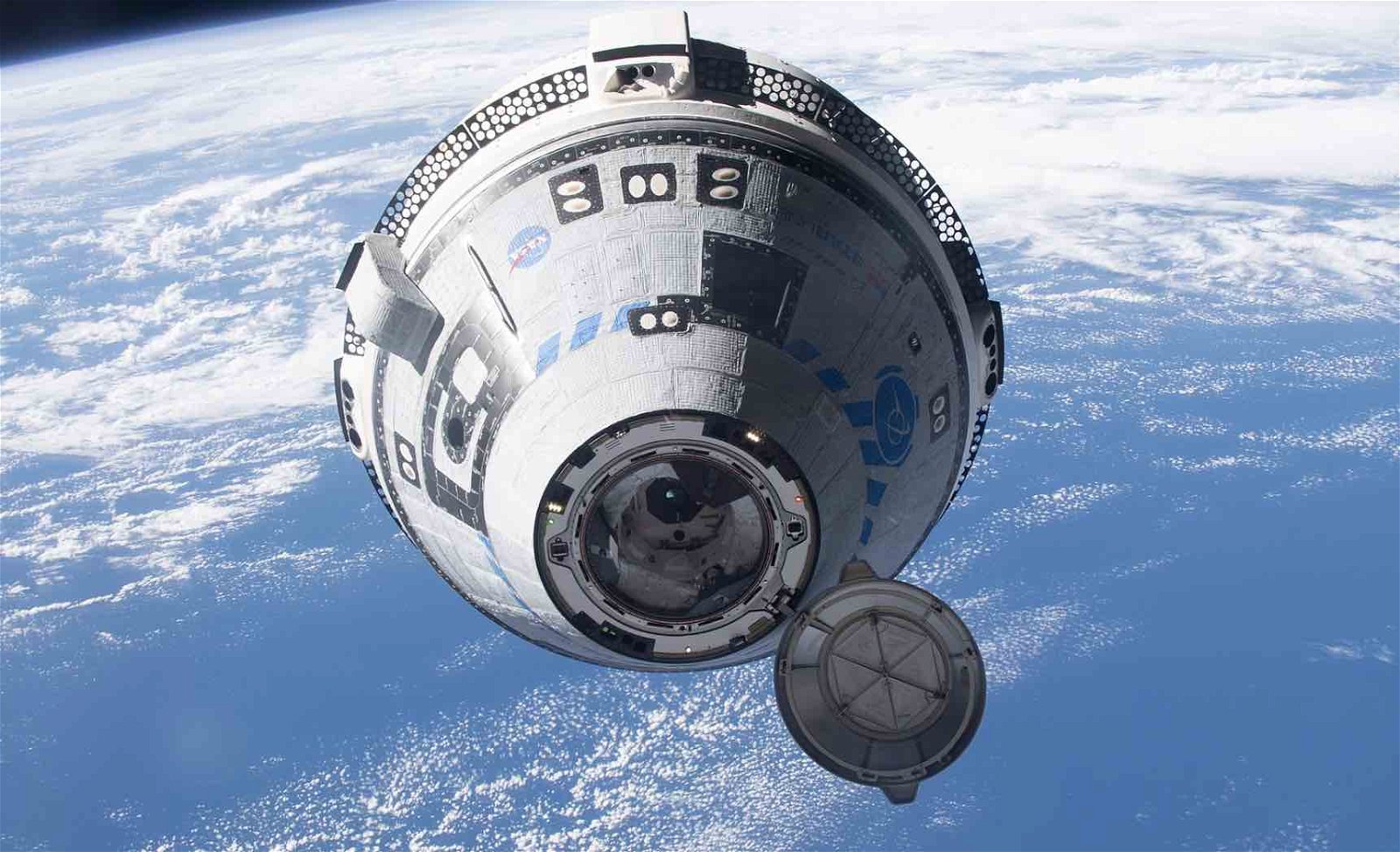


Welcome to this week’s Intelligence Brief… Houston, we’ve got a problem, and it has now kept two astronauts carried to space in June aboard Boeing’s Starliner spacecraft on the International Space Station for weeks longer than their original mission plan entailed. This week, we’ll be looking at 1) new revelations this week that could mean NASA is looking at a “Plan B” scenario involving SpaceX, 2) why the problems with the Boeing Starliner spacecraft could be worse than we realized, and 3) what this all means for Boeing amidst a complicated year of setbacks for the aerospace giant.
Quote of the Week
“We could take either path, and reasonable people could pick either path.”
– Ken Bowersox, NASA Associate Administrator for the Space Operations Mission Directorate
Latest News: In recent articles at The Debrief, researchers have made a groundbreaking discovery that reveals a potential way for patients to “speak” using only the power of thought. Elsewhere, this shapeshifting robot could be the future of space exploration. You’ll find links to all of our recent stories at the end of this week’s newsletter.
Podcasts: In podcasts this week, over on The Micah Hanks Program we continue the story of America’s postwar intelligence operations involving war criminals with the story of Japan’s notorious Unit 731, and how it may be related to the greatest controversy in the history of UFOs. Meanwhile, in advance of the return of The Debrief Weekly Report from its summer break, you can catch up on past episodes over on The Debrief’s Podcasts Page.
Video News: On the latest episode of Rebelliously Curious, Chrissy Newton is joined by Dr. Julia Mossbridge for a discussion involving taboos, fear, and their relationship to UAP. Be sure to check out other great content from The Debrief on our official YouTube Channel.
Now, it’s time to take a look at the revelations this week from NASA involving the Boeing Starliner controversy, and why it means a pair of veteran astronauts who planned on spending eight days in space could be staying well into next year.
NASA Floats “Plan B” for Retrieving Starliner Astronauts
This week, we learned that NASA is now considering whether to return a pair of astronauts to Earth on a SpaceX spacecraft, after they were carried to the International Space Station on a Boeing spacecraft more than two months ago for what was expected to only be an eight-day stint in orbit.
On June 5, astronauts Butch Wilmore and Suni Williams lifted off on a crewed test mission of Boeing’s Starliner, a next-generation spacecraft built for carrying crews to low-Earth orbit destinations. However, several problems that include thruster malfunctions and helium leaks that have caused setbacks for the Starliner program left Wilmore and Williams stranded on the space station.



On Wednesday, the mounting concerns about the Starliner ultimately led to projections that the astronauts’ extended stay could go on for up to several more months, possibly keeping them in orbit until February 2025. During a press conference, NASA said it is now weighing the option of bringing them home on a SpaceX spacecraft, with officials from the space agency finally admitting that issues with Starliner may be more serious than previously thought.
More Serious Than We Realized?
This week’s revelations marked a significant shift for the American space agency, which has seemingly made little of the issues that have now kept Wilmore and Williams as guests aboard the ISS now for several weeks. It also revealed how NASA, despite maintaining an unwavering appearance publicly, had in reality been undergoing internal division, according to sources who were reportedly familiar with the matter, which led to the agency quietly beginning talks with Space X about the prospect of a Plan B effort.
Unfortunately for the waylaid spacefarers, the new plan to potentially use a SpaceX spacecraft to bring them home will likely require them to remain in orbit for several more months, spending the Christmas and New Year holidays in orbit.
The contingency plan, revealed this week, would likely involve a Crew Dragon capsule, which normally carries four astronauts, into orbit with only half that number of crew members.
Bad News for Boeing
2024 has been a tumultuous year for Boeing, seeing the aerospace giants at the center of controversies that include the blowout of part of a Boeing 737 jet’s fuselage in January, an incident that led to the grounding of 171 Boeing 737 MAX 9 aircraft following an official FAA order. That was followed by $125 million in unplanned costs for the Starliner program the company announced earlier this month, among other issues the company has faced.
Nonetheless, Boeing maintains a confident stance in public, assuring that there are no reasons for significant concerns about Starliner’s capabilities.


“We still believe in Starliner’s capability and its flight rationale,” a Boeing spokesperson said this week. “If NASA decides to change the mission, we will take the actions necessary to configure Starliner for an uncrewed return.”
Naturally, Boeing executives are unhappy about the prospect of having to leave their aircraft parked in orbit while its astronaut pilots are returned to Earth by SpaceX, one of its chief competitors in the burgeoning 21st century commercial space race.
Boeing’s Starliner isn’t the only spacecraft that has been met with challenges recently. A Northrop Grumman cargo spacecraft, Cygnus, also faced issues earlier this summer, although it was eventually able to dock with the ISS successfully after facing an issue with its propulsion system.
Analysis and Backup Preparations
NASA and Boeing engineers have continued to evaluate the situation, conducting tests to try and understand what is causing the thruster issues Starliner has experienced. During ground tests, it was learned that there was unexpected degradation detected in the thrusters, which caused questions about whether they could be relied on for future reuse.
Fortunately, improved performance was evidenced during further testing in space, although this was not enough to qualm NASA’s concerns about potential issues that could arise.
“We continue to support NASA’s requests for additional testing, data, analysis and reviews to affirm the spacecraft’s safe undocking and landing capabilities,” Boeing said in an update on its website posted on August 2.
“Our confidence is based on this abundance of valuable testing from Boeing and NASA. The testing has confirmed 27 of 28 RCS thrusters are healthy and back to full operational capability. Starliner’s propulsion system also maintains redundancy and the helium levels remain stable,” the statement read.
“The data also supports root cause assessments for the helium and thruster issues and flight rationale for Starliner and its crew’s return to Earth,” it said.
Altogether, if NASA moves forward with an alternative plan that involves SpaceX, it is unclear what this could mean for Boeing going forward, although one thing that does seem clear: it will only add further problems to an already chaotic year for one of America’s largest–and currently embattled–aerospace companies.
That concludes this week’s installment of The Intelligence Brief. You can read past editions of The Intelligence Brief at our website, or if you found this installment online, don’t forget to subscribe and get future email editions from us here. Also, if you have a tip or other information you’d like to send along directly to me, you can email me at micah [@] thedebrief [dot] org, or Tweet at me @MicahHanks.


Here are the top stories we’re covering right now…
- 37-Million Electron-Volt Discovery Reveals New Insights Into the Most Powerful Gamma-Ray Burst Ever Detected
Scientists have discovered the highest energy spectral line features ever associated with a gamma-ray burst, according to newly published findings.
- Ancient Egyptian Pyramid Builders May Have Used Hydraulic Technology, New Research Suggests
Ancient Egyptian pyramid builders may have used hydraulic technology to move the massive stones used in the monuments’ construction.
- NASA Thinks We’re Closer Than Ever to Discovering Evidence of Life on Mars. Here Are Three Reasons Why.
NASA scientists are becoming more confident about the prospects for finding evidence for the existence of ancient life on Mars.
- James Webb Space Telescope Makes a Jaw-Dropping Discovery That Leaves Astronomers Seeing Double
A team of astronomers say they have made a jaw-dropping new discovery with help from NASA’s James Webb Space Telescope.
- Biorepository on the Moon Could Preserve Genetic Material From Endangered Species, Researchers Say
An international team of scientists has proposed a unique idea to protect the Earth’s endangered species: a biorepository on the Moon.
- Quantum Tunneling Mysteries to be Unraveled Under New NSF Funded Effort
New research into quantum tunneling aims to unravel the central mystery behind the seemingly impossible quantum physics phenomenon.
- Graphene, Earth’s Most Promising “Wonder Material,” Has Been Found on the Moon
For the first time, researchers have found evidence of naturally-formed graphene in soil samples collected from the Moon.
- 42,000 Years Ago, Ancient Humans Used ‘Advanced Technology’ to Traverse Oceans and Colonize Remote Islands
New discoveries on the remote Tanimbar Islands reveal ancient seafaring humans used advanced maritime technologies over 42,000 years ago.
- New Clues to 3,500-Year-Old “Screaming Woman” Mummy Mystery Unearthed by Scientists
Scientists are searching for answers to what caused the mysterious death of an Egyptian mummy known as the “Screaming Woman” nearly 3,500 years ago.
- “Speech” Using Only the Power of Thought May Soon Be a Reality, New Research Reveals
Researchers have made a groundbreaking discovery that reveals a potential way for patients to “speak” using only the power of thought.
- This Shapeshifting Robot Could Be the Future of Space Exploration
A new shapeshifting robot inspired by the ancient Japanese paper-folding art of Origami could represent the future of space travel.
- Pyramid Power: Technology Resembling World’s Most Famous Ancient Structure Leads to Game Changer in Optical Communication
A potentially revolutionary new pyramid-shaped technology could greatly advance optical communications.
- Anti-Aging Secrets Revealed? Regenerative Genes Extend Lifespan in Study Revealing Genetic ‘Fountain of Youth’
Researchers who transferred highly regenerative genes from flatworms to fruit flies say it extended the recipient insect’s life span.
- Russia Releases Wrongfully Accused Americans in Historic Prisoner Swap
A multi-nation prisoner swap has led to the release of reporter Evan Gershkovich and former U.S. Marine Paul Whelan, who were freed by Russia on Thursday.
- Operation Paperclip
This week we explore Operation Paperclip, a shocking secret program undertaken to bring former Nazi scientists to the United States.
- Mysterious Gigantic Features Discovered Beneath Antarctica’s Dotson Ice Shelf by Underwater Robotic Survey
New imagery from beneath Antarctica’s Dotson Ice Shelf has revealed the existence of previously unknown features.
- Academics Unite to Bring Humanities to the Study of Aerial Mysteries at Society for UAP Studies Event
Academics with the Society for UAP Studies are calling for deeper involvement from professionals in the study of UAP.
- ‘Oumuamua Was Younger Than We Thought, New Findings Suggest. Here’s Why That Matters.
Was the mysterious interstellar object ‘Oumuamua younger than we thought? New findings suggest it was, raising new questions about its possible origins.
- DARPA Funded Research Shows Advances in Powering Robot Spy Bugs with Ocean Bacteria
A new robot bug that can live in the ocean for 100 years and feed off of bacteria has made its debut as DARPA’s latest surveillance tool.
- This Cannabis Extract Showed Reductions in Anxiety and “Statistically Significant” Improvements in Memory
Researchers studying this lesser-known cannabis extract report reduced feelings of anxiety and stress along with improvements in memory.
